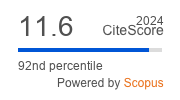MULTIPLE INSTANCE LEARNING FOR HUMAN EMOTION ANALYSIS USING GABOR FEATURES
DOI:
https://doi.org/10.29284/ijasis.4.2.2018.31-37Keywords:
Facial expression analysis, Gabor filter, multiple instance learning, human emotion classification, JAFFE databaseAbstract
Facial expression analysis (FEA) or Human Emotion Analysis (HEA) is an essential tool for human computer interaction. The nonverbal messages of humans are expressed by facial expression. In this study, an HEA system to classify seven classes of human emotions like happy, sad, angry, disgust, fear, surprise and neutral is presented. It uses Gabor filter for feature extraction and Multiple Instance Learning (MIL) for classification. Gabor filter analyzes the facial images in a localized region to extract specific frequency content in specific directions. Then, MIL classifier is used for the classification of emotions into any one of the seven emotions. The evaluation of HEA system is carried on JApanese Female Facial Expression (JAFFE) database. The overall recognition rate of the HEA system using Gabor and MIL technique is 95%.
References
B. Lee, J. Chun, and P. Park, “Classification of facial expression using svm for emotion care service system”, International Conference on Software Engineering, Artificial Intelligence, Networking, and Parallel/Distributed Computing, 2008, pp. 8-12.
D. Thuthi, “Recognition of facial expression using action unit classification technique”, International Conference on Recent Trends in Information Technology, 2014, pp. 1-5.
M. Ahmady, and R. Ghasemi, “Local weighted Pseudo Zernike moments and fuzzy classification for facial expression recognition”, Iranian Conference on Fuzzy Systems, 2013, pp. 1-4.
J. Toth, and M. Arvaneh, “Facial expression classification using EEG and gyroscope signals”, International Conference of the IEEE Engineering in Medicine and Biology Society, 2017, pp. 1018-1021.
T. Raksarikorn, and T. Kangkachit, “Facial Expression Classification using Deep Extreme Inception Networks”, International Joint Conference on Computer Science and Software Engineering, 2018, pp. 1-5.
Z. Wang, R. Jiang, X. Jiang, and T. Zhou, “Learning sparse representations by K-SVD for facial expression classification”, International Conference on Computer Science and Network Technology, 2015, pp. 772-775.
J. Li, and L. Peng, “Feature difference matrix and QNNs for facial expression recognition”, Chinese Control and Decision Conference, 2008, pp. 3445-3449.
H. Wang, J. Gao, L. Tong, and L. Yu, “Facial expression recognition based on PHOG feature and sparse representation”, Chinese Control Conference, 2016, pp. 3869-3874.
R. Ghasemi, and M. Ahmady, “Facial expression recognition using facial effective areas and Fuzzy logic”, Iranian Conference on Intelligent Systems, 2014, pp. 1-4.
W. Chu, Z. Ying, and X. Xia, “Facial expression recognition based on binarized statistical image features”, International Conference on Natural Computation, 2013, pp. 328-332.
M.B. Mariappan, M. Suk, and B. Prabhakaran, “Facial expression recognition using dual layer hierarchical SVM ensemble classification”, International Symposium on Multimedia, 2012, pp. 104-107.
L. Du, and H. Hu, “Modified classification and regression tree for facial expression recognition with using difference expression images”, Electronics Letters, Vol. 53, No. 9, 2017, pp. 590-592.
I. Kotsia, and I. Pitas, “Facial expression recognition in image sequences using geometric deformation features and support vector machines”, IEEE transactions on image processing, Vol. 16, No. 1, 2006, 172-187.
X. Li, and M. Wang, “Research of multi-focus image fusion algorithm based on Gabor filter bank”, International Conference on Signal Processing, 2014, pp. 693-697.
J. Pavlovičová, M. Oravec, and M. Osadský, “An application of gabor filters for texture classification”, Proceedings ELMAR, 2010, pp. 23-26.
R. Hong, M. Wang, Y. Gao, D. Tao, X. Li, and X. Wu, “Image annotation by multiple-instance learning with discriminative feature mapping and selection” IEEE transactions on cybernetics, Vol. 44, No. 5, 2013, pp. 669-680.
Y. Xiao, B. Liu, Z. Hao, and L. Cao, “A similarity-based classification framework for multiple-instance learning” IEEE transactions on cybernetics, Vol. 44, No. 4, 2013, pp. 500-515.
M. Lyons, S. Akamatsu, M. Kamachi, J. Gyoba, “Coding facial expressions with gabor wavelets”, Third IEEE international conference on automatic face and gesture recognition, 1998, pp. 200-205.
JAFFE database: http://www.kasrl.org/jaffe.html.
Downloads
Published
Issue
Section
License
This work is licensed under a Creative Commons Attribution 4.0 International License, which permits unrestricted use, distribution, and reproduction in any medium, provided the original work is properly cited.











